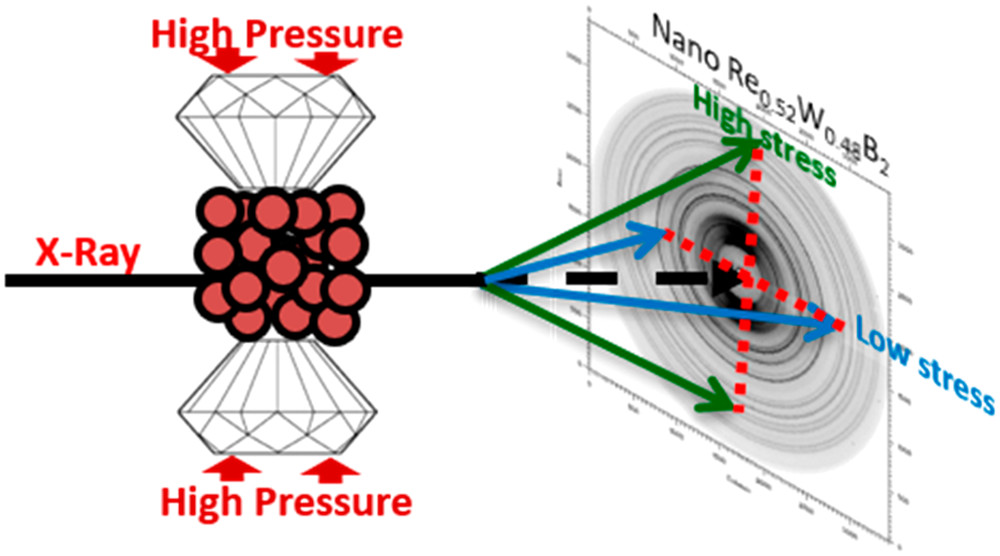Designing Superhard Materials
Ten years ago, we (along with Professor Sarah Tolbert and her research group) suggested that new superhard materials could be compositionally designed by incorporating covalent bonding into high valence electron density metals. The covalent bonds prevent shear and the electron density adds incompressibility. Transition metal borides exemplify these parameters by providing high valence electron density, multiple boron-boron covalent bonds, and unique crystallographic structures. This idea was first demonstrated with osmium diboride (incompressible), and then with rhenium diboride and tungsten tetraboride (both of which are superhard and incompressible). The Kaner group now seeks to refine and expand on these materials by focusing on structure and bonding motifs. The superhard design toolkit can be enlarged by studying the mechanical properties of new tungsten tetraboride solid-solutions, increasing electron density through doping, and by examining the lower borides of tungsten, which complement the 3-D boron network of tungsten tetraboride by containing 0-D, 1-D, and 2-D boron structures. This family of compounds serves as a model system for understanding how the nature of B-B and B-metal bonds affect hardness. The eventual goal is the development of a third design parameter to explicitly elucidate the structures and bonding motifs that should most improve macroscopic mechanical properties based on microscopic bonding.
High-Pressure Study on Superhard Materials

All of our work in the area of designing new ultrahard materials is part of a longstanding and very fruitful collaboration with the Tolbert group. The work focuses on a large family of transition metal borides that are both extremely hard and metallic in nature, allowing them to be easily shaped and formed using electric discharge machining, despite their high hardness. These superhard metals can be synthesized at ambient pressure and have exciting potential for next generation cutting tools. During the past few years, we have focused on expanding the range of materials that show superhard behavior, examining both lower boride (ex- WB) and a wide range of solid solution based materials. The Tolbert group emphasis in this work has largely focused on high pressure studies, in an effort to understand lattice deformation in these new materials with crystallographic specificity.
